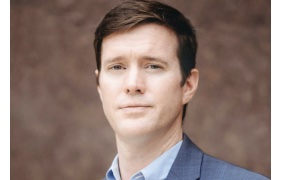
Two Different Visions of Social Equity Cannabis
After helping many clients get Illinois licenses for dispensaries or craft grows, New Mexico legalized it about two years later in early summer of 2021. Both states legalized cannabis legislatively, wth Illinois being the first state to do so and New Mexico being the 5th. Both provided detailed policy goals of social equity.
While Illinois heavily regulated the industry and restricted the number of licenses, New Mexico chose a different approach. The result of this distinction caused the development and evolution of their respective industries a night and day difference.
This post explores the policy goals and distinctions between the two legislative schemes and raises questions about what one accomplishes the legislative intentions to provide opportunities for social equity.
A tale of two different markets: Illinois compared to New Mexico
Despite having about ten million fewer people in the state, New Mexico already has hundreds more dispensaries and cultivators than Illinois.
The cost to open a dispensary license in New Mexico is hundreds of thousands less than in Illinois, but much more competition arises as anyone that wants a license can pursue that dream. All license holders in New Mexico must provide a Social Equity Plan to the regulators in their licensing process. The regulatory burden on a New Mexico dispensary is substantially less than their Illinois counterparts.
An adult cannabis consumer in Albuquerque has a selection of dozens of newly licensed businesses to stop into for their purchases. The vast majority of these businesses are locally owned and operated.
Meanwhile, Illinois required certain social equity definitions to access a lottery to obtain a dispensary license out of a precise number of licenses to be awarded by regulators. Once winning that lottery, no change of ownership is permitted until after the license becomes operational. Because of the zoning and security requirements in Illinois, opening a dispensary for less than a million dollars is not ordinary.
An adult in Chicago has only a handful of newly awarded licenses to visit and purchase cannabis products, and few former medical dispensaries that got a years’ long headstart in the state’s medical cannabis market. The vast majority of these businesses are corporately owned and perhaps even publicly traded on the Canadian markets.
What policy goals did the legislature try to accomplish by creating a limited and highly regulated market?
When a state limits their cannabis market, it often has reasons. Are these sound policy goals, or is it more of a political arrangement that provides direct benefit to the chosen few at the exclusion of others?
Is the high level of regulatory compliance in Illinois to provide for safety and security for a still federally illegal industry that must operate principally in cash that creates a robbery risk? Well, what has the greater risk of robbery – being one of thirty dispensaries that serve the market, or being one of three that serve the same market size? By limiting the number of dispensaries, or other cannabis licenses, the State has created an artificial market that creates a disproportionate amount of cash for only those select few that can get a license that costs more than a million dollars to become an operational dispensary. The theft and robbery risks, in addition to the cash handling issue, creates a lot of money concentrated in a few hands instead of being spread out amongst as many dispensaries the market can support.
Was the policy goal of the law to wipe out the illicit market? If so, limiting the availability of licenses to only a lucky group of lottery winners eligible to play will not accomplish that goal. New Mexico has no lock out for legacy operators that want to go legit, but Illinois cannabis law provides no pathway for that entrepreneur. As a result, the legacy market is still the largest cannabis market in Illinois.
Was the policy goal of the law to enable social equity ownership and operations of the industry? If so, New Mexico runs circles around Illinois on achieving this goal. In Illinois, many social equity winners of the limited licenses must sell out control or ownership in order to become operational as it costs about ten times the amount to become a legally compliant and operational dispensary in Illinois compared to New Mexico. If the policy goal is to enable ownership and operations of cannabis licenses, making them prohibitively expensive to open frustrates that goal.
For example, in New Mexico a small grower of just 200 plants can open up shop for tens of thousands of dollars. On the other hand, in Illinois, the craft grower license is the smallest limited license and one can cost ten million dollars to open at its full capacity of 14,000 sq. ft. of canopy size.
Finally, was the policy goal to create a vibrant and competitive marketplace? If so, shielding the license holders from market competition and forces that will apply after the federal shoe drops and the United States legalizes cannabis only sets up the limited number of license holders up for failure.
Conclusion
The discrepancies between the cost of cannabis licenses in various states demonstrate how the costs could be prohibitively expensive for social equity entrepreneurs. These high costs are detrimental to creating a dynamic marketplace and setting license holders up for success – especially if the US federal government chooses to legalize cannabis. This is why it is important for states to consider what their state’s policy goals are before implementing their legal cannabis program. If the policy goals are to eradicate the illicit market and ensure their state has a diverse and dynamic industry rather than one based on exclusivity. If you want a limited license because you think it is a sure thing, you just may end up getting nothing.
By: Tom Howard
